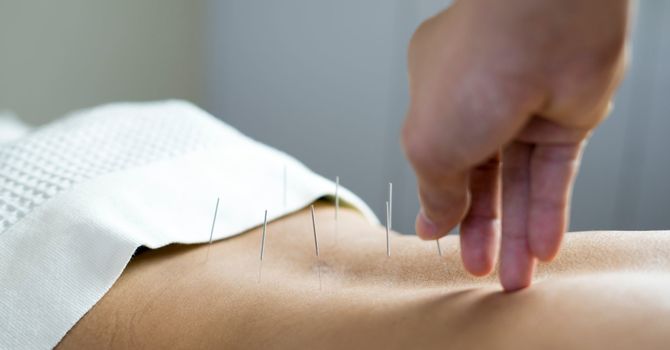Introduction
If you’ve ever hit the gym hard and felt sore afterward, you’re not alone. Post-workout muscle soreness, or delayed onset muscle soreness (DOMS), is a common experience for those pushing their limits. At AHC Wellness Clinic, we offer effective recovery solutions with Registered Massage Therapy (RMT) and osteopathic treatments, both designed to relieve soreness, speed recovery, and get you back to your workouts sooner.
Why Muscles Get Sore After Exercise
When you exercise, especially during strength or high-intensity training, your muscles experience tiny tears in the fibers. This is a natural part of building strength but can lead to:
- Inflammation: Micro-tears cause localized inflammation as muscles heal.
- Increased Blood Flow: The body sends more blood to the area to aid in repair, which can contribute to swelling.
- Tightness and Stiffness: Muscles become tighter as they recover, often causing discomfort and limiting flexibility.
This cycle of stress and repair is how muscles grow stronger, but the accompanying soreness can interfere with regular activities and delay your next workout. Thankfully, RMT and osteopathic therapy provide proven ways to ease this process.
How RMT Eases Post-Workout Soreness
Massage therapy is a well-known method for helping muscles recover after intense physical activity. Here’s how RMT helps with workout recovery:
-
Reduces Muscle Tension
- Targeted massage therapy loosens tight muscles, reducing tension in areas like the legs, back, and shoulders that often experience soreness.
-
Enhances Circulation
- Massage increases blood flow, helping deliver oxygen and nutrients to the muscles while flushing out waste products like lactic acid that build up during exercise.
-
Minimizes Inflammation
- Techniques such as deep tissue massage and Swedish massage can reduce muscle inflammation, helping to speed up recovery and reduce soreness.
-
Promotes Flexibility
- Regular RMT sessions can help keep muscles flexible, reducing the risk of injuries and making your workouts more effective.
-
Improves Lymphatic Drainage
- Massage therapy supports lymphatic drainage, helping remove toxins and reduce swelling, which can make muscles feel less sore and more mobile.
At AHC Wellness Clinic, our RMTs are trained in techniques that specifically target post-workout soreness, offering relief that can help you get back to the gym faster and stronger.
How Osteopathic Treatments Support Muscle Recovery
Osteopathy is a holistic, hands-on therapy focused on the body’s structure, with techniques that can be highly effective for workout recovery. Osteopathic treatments address the root of post-exercise discomfort and support the body’s healing process by focusing on alignment and overall muscle balance.
Here’s how osteopathy helps after workouts:
-
Re-aligns Muscles and Joints
- Intense workouts can create imbalances in the musculoskeletal system. Osteopathic adjustments restore alignment, which promotes faster healing and reduces strain on sore muscles.
-
Improves Joint Mobility
- Osteopathic techniques such as gentle manipulations and stretches can relieve stiffness in joints, improving range of motion, which is essential for effective workouts and smooth recovery.
-
Addresses Inflammation Holistically
- By addressing not just the site of pain but the surrounding structures, osteopathy can relieve inflammation more effectively, helping the body heal in a balanced way.
-
Strengthens Connective Tissues
- Osteopathy works with the body’s soft tissues, which include not only muscles but also tendons and ligaments. Treatments help strengthen these tissues, reducing soreness and preventing overuse injuries.
-
Promotes Nervous System Balance
- Osteopathy encourages the parasympathetic nervous system, which supports relaxation and healing. This nervous system response is key for muscle recovery after high-intensity training.
Our team at AHC Wellness Clinic uses a combination of techniques to maximize the benefits of osteopathy for each client, ensuring treatments are customized to support workout recovery and long-term health.
Why Combining RMT and Osteopathy is Ideal for Recovery
Both RMT and osteopathy offer unique benefits for post-workout soreness, but together they can:
- Optimize Healing: Osteopathy aligns the body for balance, while RMT focuses on muscle relaxation and flexibility.
- Reduce Risk of Injury: This combined approach targets both muscles and structural alignment, reducing strain and the chance of overuse injuries.
- Enhance Performance: Flexible, aligned muscles work more effectively, helping you perform better and recover faster.
Tips for Reducing Post-Workout Soreness
While RMT and osteopathy are excellent ways to speed recovery, here are some additional tips for easing soreness on your own:
- Stay Hydrated: Hydration helps remove waste from muscles and supports healthy circulation.
- Stretch and Cool Down: Cooling down after a workout can ease tension and reduce stiffness.
- Use Foam Rolling: Foam rolling can release muscle tightness and prevent soreness in between massage sessions.
- Get Enough Rest: Your body needs sleep and rest days to recover, making your efforts in the gym more effective.
Conclusion
Post-workout soreness doesn’t have to slow you down. With the help of AHC Wellness Clinic’s massage therapy and osteopathic treatments, you can enjoy a faster recovery, better flexibility, and fewer aches. If you’re ready to experience pain relief after intense workouts, book an appointment with our expert therapists. We’ll help you feel your best, both inside and outside the gym.

AHC Wellness Clinic
Contact Me


